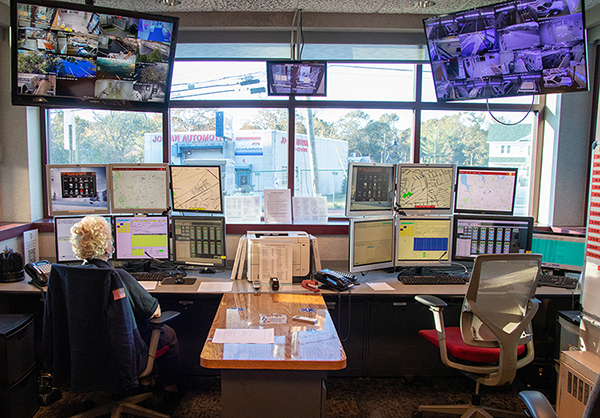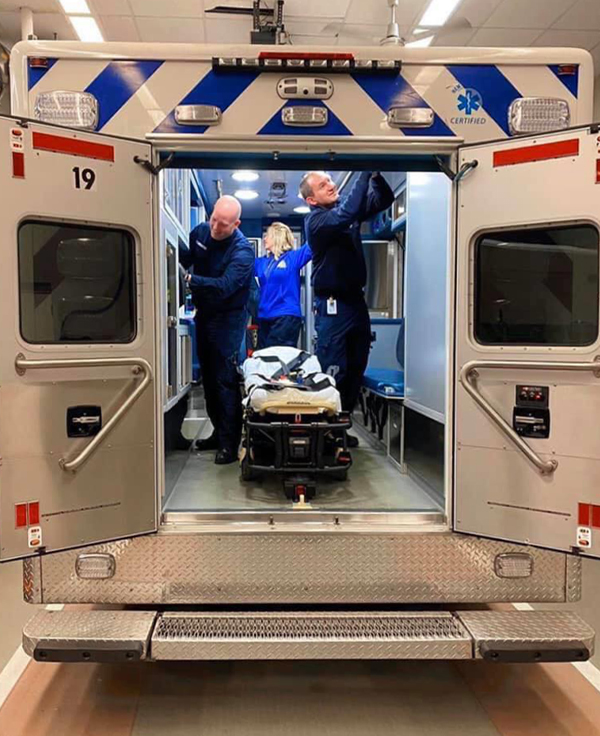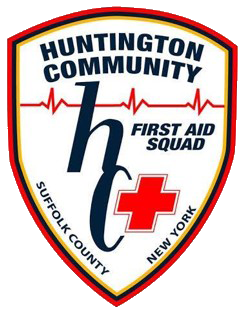
Always call 911 in an emergency
Serving the Community
24/7/365 every moment of the day, every day of the year, no matter day or night, good or bad weather, even on holidays, we are here to answer the call from our neighbors in need. With fully trained on-duty crews in-house ready to go.
Huntington Community First Aid Squad (HCFAS) provides Basic Life Support and Advanced Life Support services throughout our district. We have over 250 members that serve our community and help people in times of need. All responses to medical emergencies are staffed by at least one EMT; a Paramedic will also respond to the scene based on the type of call received by our Dispatcher. First Aiders often respond to calls to assist an EMT and/or Paramedic. You can read more about our Crews here.
Basic Life Support (BLS)
All of HCFAS EMTs have received training and are prepared to provide Basic Life Support (BLS) services and address immediate and threatening injuries and medical conditions. These BLS skills include but are not limited to CPR, AED operation, splinting and bandaging, and administration of limited medications.
Advanced Life Support (ALS)
Our Paramedics are members that have completed advance training and are able to provide Advance Life Support (ALS) treatments for more complex traumatic and medical emergencies. ALS skills include but are not limited to performing electrocardiograms (ECG), placing IVs, administering a wider range of medications and injections, performing advanced airway management as well as other invasive and non-invasive medical procedures.
Our Crews
Our crews consists of a dispatcher, crewleader, driver and one or more first aiders. Each member of the crew first goes through training to qualify as a dispatcher, first-aider, driver and crewleader. Each crews check to ensure that the ambulance and emergency equipment are in good working order. They check and restock all the emergency supplies and medications.
Dispatchers
The dispatcher receives the call from the County 911 system. The dispatcher documents the call and alerts the crew. The dispatcher monitors and records the events of the call from the ambulance leaving the building to arriving at the hospital. The dispatcher also provides vital communications with the hospital, police, fire departments, utility companies and the Long Island Railroad if need be.


The Driver
The driver must be an EMT and have completed the Squad’s Driver Training program. The driver is responsible for transporting the crew and vehicle safely throughout the call. They remain with the emergency vehicle at the scene, unless directed otherwise by the Crewleader or officer in charge.
The Crewleader
The crewleader must also be an EMT and have completed the Squad’s Crewleader Training program. A crewleader directs the crew to best ensure all phases of care are being met. They perform the interview and fact-gathering of the patient, document it, and determine how best to treat the patient.
The First-Aiders
The first-aiders assist the Crewleader during the call. They take ‘vitals signs’ – pulse, blood pressure and respiration rates, and as an EMT or under the supervision of the EMT, make a comprehensive check of the patient for injuries and ailments, administer oxygen, cold packs, dressings and bandages, splints, secure and transport the patient on the stretcher into and out of the ambulance, and report their findings to the crewleader.
